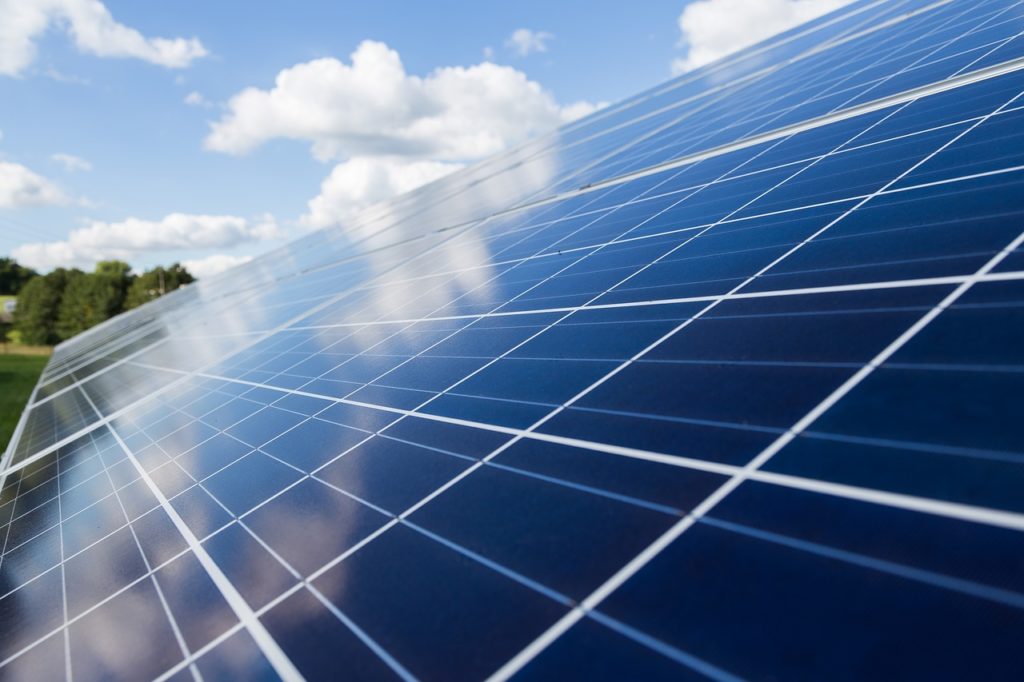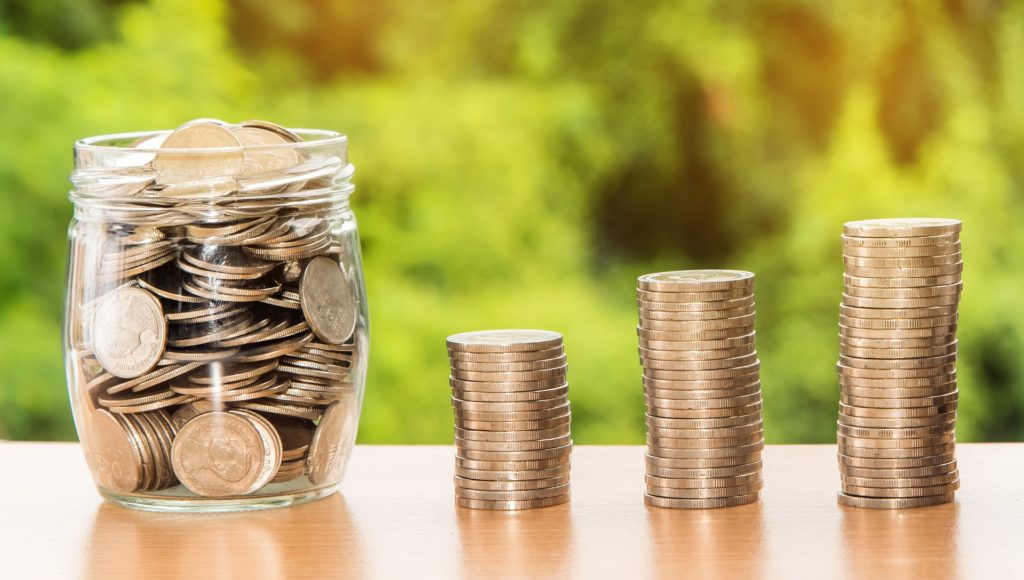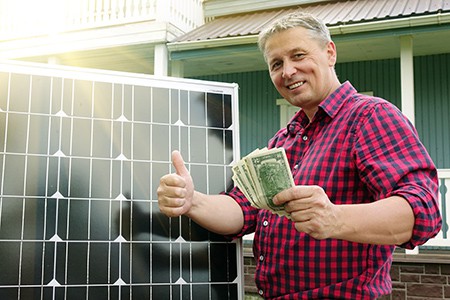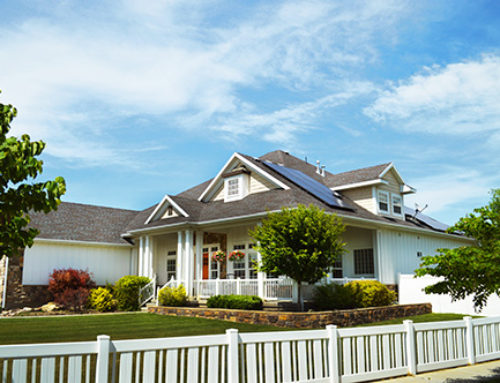Why You Should Switch to Solar Energy
According to the Solar Energy Industries Association, 67 gigawatts of solar power have been installed in the United States in the first quarter alone. That’s enough to power 12.7 million homes and increases 10% year after year. It’s estimated that solar energy usage is expected to double by 2024.
As America is redefining how the nation is powered solar power is becoming an increasingly attractive option.
The Basics of Solar Power
Solar power is energy that is drawn from the sun and is converted to either electrical or thermal energy (aka, heat). It is the cleanest and most abundant source of energy available, and is adaptable for residential, commercial and industrial uses alike.
The concept of using the sun as a renewable energy source is older than you may think. Evidence suggests that people have used solar energy as far back as the 7th century B.C. The photovoltaic effect was discovered in 1839 when French physicist Edmond Becquerel discovered that by putting metal electrodes in a conducting solution, he was able to produce. electricity as he exposed the solution to sunlight.
In 1905, Albert Einstein published a paper on the photoelectric effect. This brought a much wider acceptance of the idea that solar power was a viable energy source. Bell Labs first developed a practical working solar cell using silicon in 1954 and this was a precursor to using solar panels to power space crafts in the 1950s and 1960s. But it wasn’t until the oil shortage of the 1970s that solar energy was brought to the front of the American public. From that point on, solar energy began to gain traction as an alternate, renewable energy source.
How Solar Energy Works
There are three primary ways in which solar energy is harnessed.
Photovoltaics (PV) generate electricity directly from sunlight. Solar cells convert the energy into electricity and can be used for most applications. They can power everything from small electronic devices to large businesses.
Solar heating and cooling (SHC) uses heat from the sun to provide space or water heating. These solar water heaters can be used to heat your family pool or heat the air and water inside of your home, reducing the need for natural gas.
Concentrating solar power (CSP) also uses heat from the sun to run traditional, electricity-generating steam turbines that are found at large CSP power plants. These large solar “farms” are usually found in the southwest of the United States and are for utility-scale solar projects. Not residential use.
PV installations produce electricity directly from sunlight while SHC and CSP installations use the sun’s heat energy to change the temperature of water or air. PV solar cells use an inverter to change direct current to usable alternating current.
The Benefits of Switching to Solar Power
The sun is shining on the earth’s surface anyway. We may as well enjoy all of the benefits of harnessing that energy into renewable energy. The most significant of these benefits include:
You can save a lot of money. Electricity is expensive and solar energy systems give the typical homeowner an easy way to save. On a typical residential installation, switching to solar energy can save homeowners well over $100 a month. That translates to more than $30,000 over 20 years! In Hawaii, that figure is even higher, with the savings coming out to be more than $60,000 over 20 years.
The estimated break-even period for a solar installation is less than 10 years. In Hawaii (with their ample sunlight and high energy costs), that payback period is 5 years or less.
Guaranteed to perform. Solar panel manufacturers typically include warranties of 20 or 25 years with their products and the actual lifespan of panels will likely be much longer, as much as 30 to 40 years of generation.
Better for the environment. You can significantly reduce your carbon footprint on the environment with a solar installation. It’s estimated that the average residential solar system offsets as much as 100,000 pounds of carbon dioxide over 20 years. That’s the equivalent of not driving a car for 100,000 miles. Renewable, Clean energy on that scale can’t be ignored!
Immediate savings in some cases. In many places, instead of purchasing a solar installation, it’s possible to enter into a solar power purchase agreement with a third party. They will own the solar system and take care of any maintenance, repairs, and monitoring. In return, you simply pay for the solar energy you use, but at a much lower rate than what you would pay a utility company.
Increased home values. Lower electricity costs make a home more attractive when you go to sell it. A National Renewable Energy Laboratory (NREL) study showed that homes with solar panels sell 20% faster and for 17% more money. According to the U.S. Department of Energy Lawrence Berkeley National Laboratory data revealed that the sales price of an average home increased $17,000 with solar panels.
Efficiency keeps improving. Solar technology keeps improving at a rapid pace. Right now, solar efficiency ratings are anywhere from 11-15%. This is the percentage of solar energy that is being converted to useable electric energy. Scientists have achieved 40% efficiency but this technology is not yet available to the public. Efficiency can be improved by making smart decisions about panel design and construction, positioning and the angle of installation, the pitch of a roof, and whether or not shade interferes with the ability to achieve maximum light exposure.
Is Solar Power Right for You?
An efficient, renewable energy source that lowers your monthly bills and reduces our dependence on fossil fuels is tempting to say the least. So, now you have to ask if solar power is right for you. Here are some things to consider:
How long will you be in your home? Keep in mind that installation won’t be cheap, so you need to know if you’ll be living in your home long enough break even. If you know you’ll be moving soon, even the added value bump in your home may not be worth the up-front investment. In this case, it’s probably best to wait until after you move to a home you know you’ll be in for at least 7-10 years (less if you are lucky enough to live in Hawaii).
How much energy do you need? The more electricity you use, the bigger the solar installation you will need. This will drive up the initial installation costs, but also gives you more savings overall.
Location, location, location. The amount of direct sunlight your home gets will directly affect how effective your solar installation is. Not only do you need to consider what region you live in, but tall buildings or tall trees that will limit the exposure time of the panels.
What type of roof do you have? Panels can be installed on virtually every kind of roof, but installation costs may be more depending on whether or not you have composite shingles, wood shingles or Spanish tiles. It’s important to ask this question as you begin to gather information. Talk to your solar installer for what you need to know based on the type of roof you have.
Output vs. Cost. Not all solar installations are created equal. The more efficient the panels, the more your system is going to cost. You need to determine if you can find the sweet spot between what you can afford and how much output and efficiency you’ll see.
Solar maintenance. Solar panels are designed to endure a wide range of climates and can go for a long time without maintenance. However, to keep your home running in optimal condition, some regular upkeep is required. A good warranty can protect you from major repairs, Keeping your system clean is a must, especially in areas where there is little rainfall. Dust, pollen, and other airborne particles can impact how efficient your system works.
Increased Property Values
The value that a solar installation can add to your property can vary.
Lawrence Berkeley National Laboratory research shows that the purchase and installation of a residential solar system will add about 3-4% to a home’s value. Buyers consistently pay a premium of about $4 per watt of installed solar capacity, meaning that a standard 6-kilowatt solar PV system will add about $24,000 to the resale value of a home.




[…] Solar is not only good for the environment but low on your pocket as well and saves a lot of money. That is the primary reason that whenever people have high electricity bills to pay or environmental issues, they think of switching to solar. […]